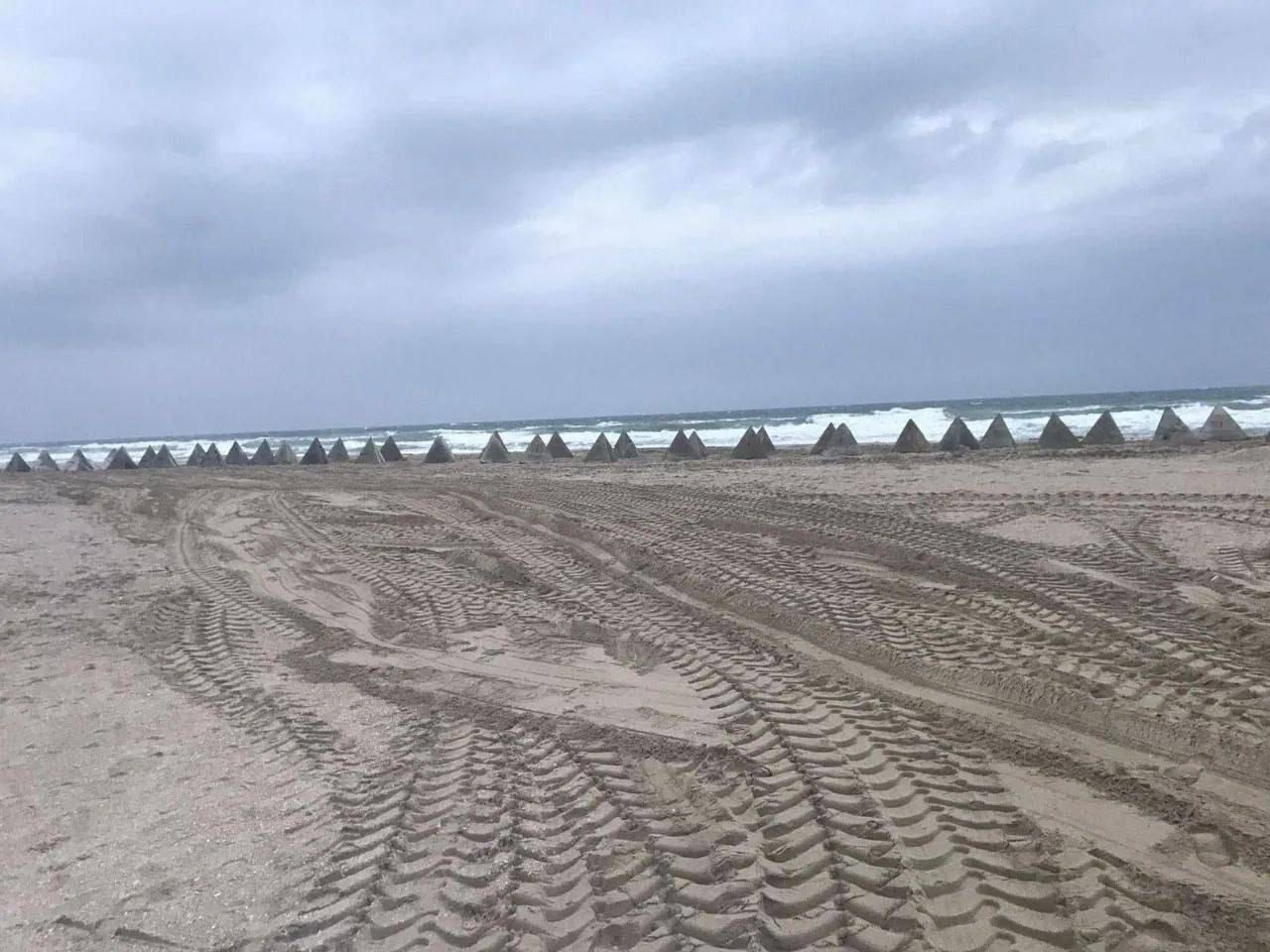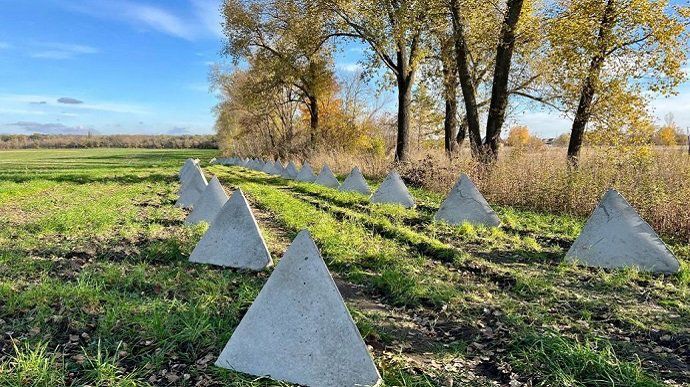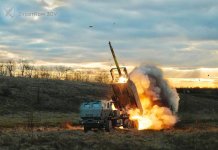The British Intelligence Agency has said that the Crimean fortifications by Russia would not be effective in a modern war scenario. It also noted that Russia is moving towards trench warfare.
After the Ukrainian troops retook the Kherson region, Russia built fortifications in and around the Crimean peninsula to repel any potential attack on this strategic region. In November, Crimea’s Head, Sergey Aksyonov, stated that the Russian military was diligently working on building fortifications.
“Fortifications works are underway on the territory of Crimea under my control to guarantee the security of Crimean residents,” Aksyonov said. He emphasized that the construction was being done on instructions from the Russian leadership to ensure Crimea’s security.
Almost a month later, new images and information surfaced online that Russia had built trenches, laid mines, and erected structures to prevent an amphibious landing by the Ukrainian troops. The image obtained by EurAsian Times (below) demonstrates the Russian effort to repel an amphibious assault.

In addition, the Main Directorate of Intelligence of the Ministry of Defense of Ukraine recently stated that “In the occupied Crimea, the ruscists are trying to fortify the coastline further, fearing the landing of Ukrainian troops. In particular, a network of mine barriers and trenches is formed along the coast near the village of Molochne (Saky district). In addition, the so-called ‘dragon’s teeth’ – rows of concrete pyramids supposed to stop the advance of heavy equipment – are placed.”
However, if the British Intelligence assessment is anything to go by, the Russian efforts would likely go in wane if the Ukrainian troops carried out an offensive to take Crimea, Ukraine Pravda reported.
“These structures align with traditional military trench plans that have remained largely unchanged since World War II. Such structures are likely to be vulnerable to accurate strikes from modern weapons,” the intelligence agency said.
The Russian and Belarusian military forces stationed in Belarus do not constitute a substantial danger to Ukraine from the north, according to the review from the day before. According to the Institute for Warfare, the Russian Federation will likely fail if the military-political leadership tries to capture Kyiv again.
Encouraged by retaking Kherson, Ukraine has set its eyes on Crimea, which Russia captured in 2014. It has long been understood as a critical staging ground for Russian operations in case of a conflict.

Nonetheless, even the higher echelons of the Ukrainian military have voiced their enthusiasm to take back Crimea and have begun strategizing for it.
The Commander-in-Chief of the Armed Forces of Ukraine, Valeriy Zaluzhny, told The Economist in an interview that the Ukrainian defenders must travel 84 kilometers to Melitopol to reach Crimea’s borders. Once there, they will have complete control over the land corridor and the chance to shell the Crimean Isthmus.
Russian Weight Is Behind Crimea
With Russia retreating from Kherson, Ukrainian forces can now position armaments nearer to Crimea, which has been the focus of several attacks in recent months.
Kyiv has consistently indicated that it aims to reclaim Crimea and has reopened a railway line from Kyiv to Kherson, likely to secure supply lines for any potential future offensive.
In October, Ukraine allegedly attacked and dealt a severe blow to the multi-million Crimean Bridge, which connects Russia with the Crimean peninsula. The attack was considered a breach of Russian red lines and triggered a massive missile attack on Kyiv, which has continued to this day, albeit in phases.
Ukraine’s troops have also managed to attack the Saky Air Base and the Sevastopol port in Crimea on different occasions. It has since continued to launch sporadic drone strikes on the region. However, a ground offensive or an amphibious assault against which Moscow is preparing hasn’t taken off.

Since Moscow began its invasion of Ukraine in February, Crimea has served as a critical base for the Russian military. Russia built the Kerch Strait or Crimean Bridge, and ships were used to transport troops, weapons, equipment, and supplies through the peninsula.
The satellite photos indicate that, as of mid-November, the airstrip at Dzhankoy had evolved into Russia’s primary supply base for its operations in southern Ukraine. The base for its attack helicopters is located there.
Vladimir Putin declared a higher level of security for Crimea and the areas bordering Ukraine in late October. According to international security experts Crisis24, the Crimean occupation authorities have been given more power by Putin to “requisition civilian infrastructure to satisfy the needs of the armed forces.”
Almost all of the big businesses on the peninsula operate under the slogan “For Russia’s Victory,” and more and more small businesses and civilian organizations, including schools, are being used to supply Russia’s army with essential supplies.
Additionally, 30,000 Russian troops are entrenched, providing little amphibious access to Ukraine. Vladimir Putin holds Crimea so strategically crucial for his country’s development and security that military watchers believe he could turn to deploy tactical nuclear weapons if Crimea was to be protected from occupation by Ukraine.
- Contact the author at sakshi.tiwari9555 (at) gmail.com
- Follow EurAsian Times on Google News




